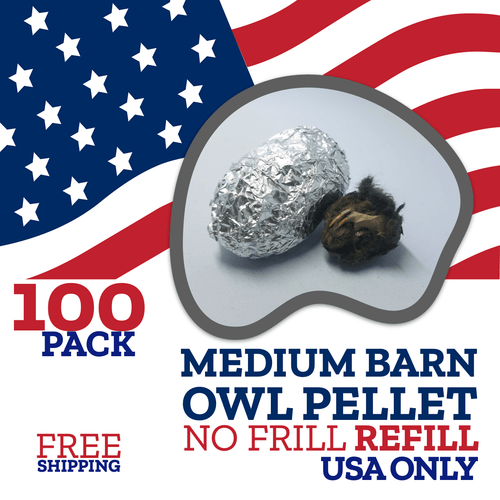No Products in the Cart
The Barn Owl: A Farmer's Best Friend
Barn owls are a fascinating species of bird with many unique characteristics. Their silent flight, excellent hunting abilities, and distinctive appearance make them a popular subject for birdwatchers and nature enthusiasts.

Barn Owls are a fascinating species of bird that can be found all around the world. They are known for their remarkable and unique appearance, silent flight, and excellent hunting abilities. Together we will explore the main characteristics of the barn owl, where they live, what they consume, their size and weight, details about their reproduction, and whether they are endangered.
Main Characteristics
Barn owls are medium-sized birds of prey with a distinctive heart-shaped face and large eyes. Their eyes are fixed in their sockets and cannot move, so they have to turn their entire head to look around. This allows them to have a wide field of vision, which is helpful for hunting in low light conditions.
One of the most unique characteristics of the barn owl is its silent flight. They have special feathers that muffle the sound of their wings, making them almost inaudible when they fly. This allows them to sneak up on their prey without being detected.
Where Do Barn Owls Live?
Barn owls can be found all around the world, except for Antarctica. They prefer to live in open habitats such as grasslands, deserts, and farmland. They are also commonly found in rural areas where there are plenty of barns and other buildings where they can nest.
What Do Barn Owls Consume?
Barn owls are carnivores and feed mainly on small mammals like as mice, voles, and shrews. They also eat other birds, reptiles, and insects. Barn owls have excellent hearing, which allows them to locate their prey even in complete darkness. They swallow their prey whole and later regurgitate pellets of undigested bones and fur.
For the reason that barn owls live near grain, grass, vineyard, and other crops, farmers are able to enjoy an organic pest manager. Barn owls reduce pesticides while lowering the cost of food production, making them a great friend to farmers!
Size and Weight
Barn owls are medium-sized birds, with a wingspan of 31-37 inches and a body length of 12-15 inches. They weigh between 14-24 ounces, with females being slightly larger than males.
Reproduction
Barn owls typically mate for life, breeding in the spring and summer months and can have up to two broods per year. Females lay an average of 4-7 eggs in a clutch, which they incubate for around 30 days. After hatching, the chicks are fed by both parents until they are old enough to leave the nest, which is usually approximately 10-12 weeks.
Endangered Status
Barn owls are not currently considered to be endangered, but they are listed as a species of concern in some areas due to habitat loss and changes in agricultural practices. In the United States, they are protected under the Migratory Bird Treaty Act, which makes it illegal to harm or kill them without a permit.
Conclusion
Barn owls are a fascinating species of bird with many unique characteristics. Their silent flight, excellent hunting abilities, and distinctive appearance make them a popular subject for birdwatchers and nature enthusiasts. They can be found all around the world and primarily feed on small mammals. Barn owls are also monogamous and mate for life, and typically breed in the spring and summer months. While they are not currently endangered, continued habitat loss and changes in agricultural practices could threaten their populations in the future.
Explore the tools behind the science




